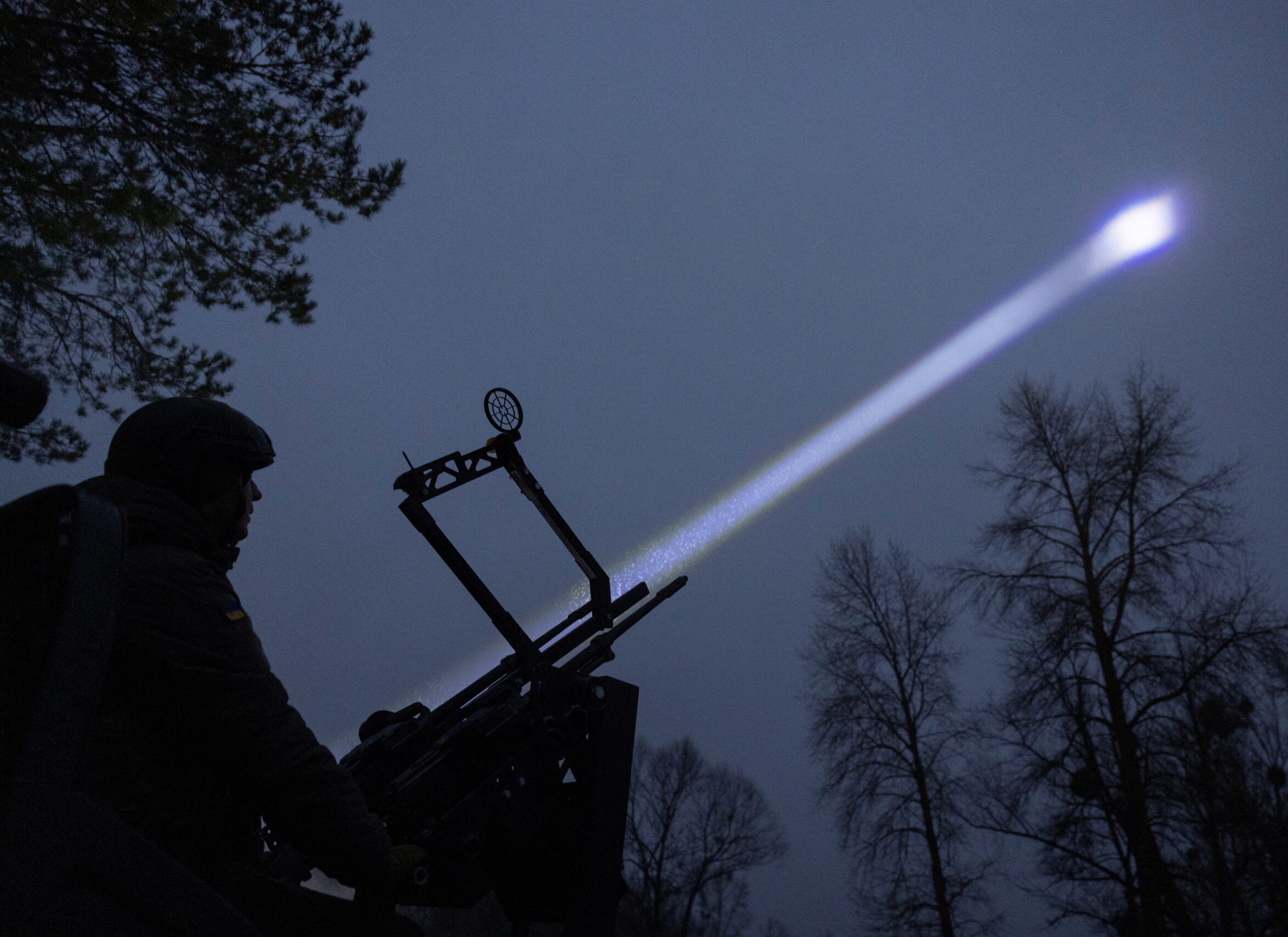Winter is not yet here but Russia has already intensified missile and drone strikes on Ukraine’s civilian energy installations. A series of powerful bombardments in the first ten days of October hit gas production in eastern Ukraine and left large parts of Kyiv and neighboring regions without electricity and water.
This is nothing new, of course. Since the start of the full-scale invasion, Russia has unleashed thousands of attacks on power lines, substations, pipelines, storage facilities, and processing plants as the Kremlin attempts to plunge Ukraine into darkness and cow the country into submission.
Russian attacks are now being conducted on an unprecedented scale. Targets are pounded by dozens of drones in one go, overwhelming Ukraine’s anti-missile systems. For example, in the early hours of October 9, Russia launched approximately 450 drones and 30 missiles at energy infrastructure, dwarfing the scale of attacks in previous years.
The coming winter is shaping up to be the harshest of the war for Ukraine’s civilian population. Kyiv Mayor Vitali Klitschko described the recent attack on the city’s electricity infrastructure as one of the most devastating since the start of Russia’s full-scale invasion. Meanwhile, officials at Ukraine’s state-owned energy giant Naftogaz say the latest Russian strikes have disabled 60 percent of the country’s gas production.
Ukraine has repeatedly demonstrated remarkable resilience, including in recent days as emergency crews worked to restore electricity to millions of people within hours of Russian strikes. Nevertheless, with the situation set to become more critical in the weeks and months to come, Ukraine’s allies need to consider decisive action.
Russia’s strikes on Ukrainian energy infrastructure are no longer just a Ukrainian problem. Moscow’s bombing campaign will become a wider European issue unless more support is offered to Kyiv. The threat to European energy markets has been increasingly apparent throughout the current year. A number of Russian attacks on Ukrainian gas production assets in February 2025 led to severe imbalances, with a knock-on impact on most central and eastern European countries.
Between February and September, Ukraine bought close to five billion cubic meters of gas from European markets to plug the gap and prepare for winter, lifting regional demand and prices. If Russia continues its attacks this winter, the impact on Ukraine and the wider region promises to be even more dramatic. To prevent a regional deficit, all neighboring countries should therefore consider lifting existing restrictions on exports to Ukraine.
Europe has options to improve the energy outlook for Ukraine, but this will require quick political decisions. Global supplies of liquefied natural gas are set to rise in the coming months thanks to a surge in production, primarily in the US. While most western European countries will benefit from these additional imports because they have access to sea terminals and functional markets, consumers further to the east are less privileged as most are landlocked or have regional transmission capacity that is either congested or too expensive to use.
Eurasia Center events

Restrictions on energy logistics networks are having a direct impact on Ukraine. Despite sharing borders with four EU countries, Kyiv has been relying mostly on Poland and Hungary to secure imports and offset the domestic deficit caused by Russian attacks. Although Slovakia could offer ample transmission capacity, most of which is now idle because the country no longer transits Russian gas, its transmission tariffs are prohibitively expensive, limiting Ukraine’s ability to import gas from western Europe.
To compound matters, tariffs could increase by a further 70 percent in January 2026 if a planned hike is approved before the end of the year. Meanwhile, neighboring Romania has no less than four border interconnectors with Ukraine. However, its gas grid operator, Transgaz, allows gas to be shipped only on one of these at less than full capacity.
Romania has significant gas production but currently bans exports to Ukraine, quoting technical differences in gas quality in the two countries. Transgaz also charges some of the most expensive transmission tariffs in the region, which means that even countries which would like to ship gas to Ukraine via Romania may be discouraged from doing so.
Keeping tariffs high or blocking infrastructure is not only bad news for Ukraine. It also poses risks to the entire region, including consumers in Romania and Slovakia, because any congestion creates artificial deficits which lead to higher prices. EU and US policymakers understand the extent of the problem and privately admit that even their own interests may be impacted. For example, blocked capacity could also limit the ability of US companies to sell LNG to clients across central and eastern Europe.
Discussions are ongoing but the clock is ticking. As winter approaches, it is now more pressing than ever for Brussels and Washington to convince countries such as Slovakia and Romania to cooperate.
In an ideal scenario, Western allies would consider radical measures such as establishing a no-fly zone over parts of Ukraine with NATO aircraft patrolling its skies and protecting its people and civilian infrastructure. However, as NATO members remain deeply reluctant to risk a direct clash with the Kremlin, the next best option is to persuade Ukraine’s neighbors to put narrow national interests aside and take concrete steps to support Kyiv.
Dr. Aura Sabadus is a senior energy journalist who writes about Eastern Europe, Turkey, and Ukraine for Independent Commodity Intelligence Services (ICIS), a London-based global energy and petrochemicals news and market data provider. Her views are her own.
The views expressed in UkraineAlert are solely those of the authors and do not necessarily reflect the views of the , its staff, or its supporters.

The Eurasia Center’s mission is to enhance transatlantic cooperation in promoting stability, democratic values, and prosperity in Eurasia, from Eastern Europe and Turkey in the West to the Caucasus, Russia, and Central Asia in the East.
Image: Vladyslav Tsukurov, judge and spokesperson of Bila Tserkva district court, observes the sky during a combat shift of his air defence volunteer unit, amid Russia’s attack on Ukraine, in Kyiv region, Ukraine November 30, 2024. (REUTERS/Valentyn Ogirenko)










